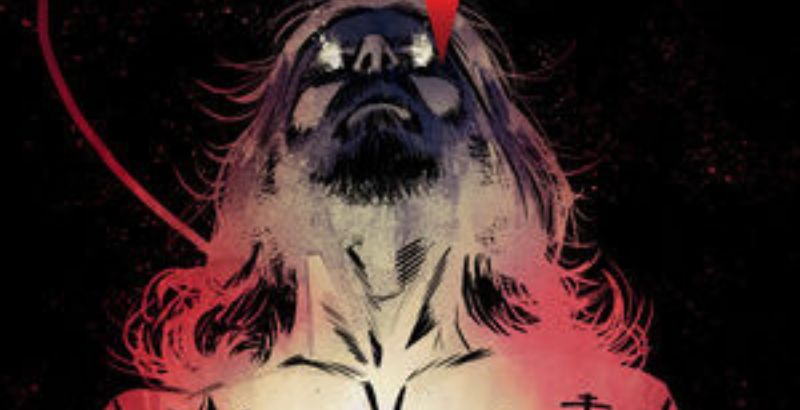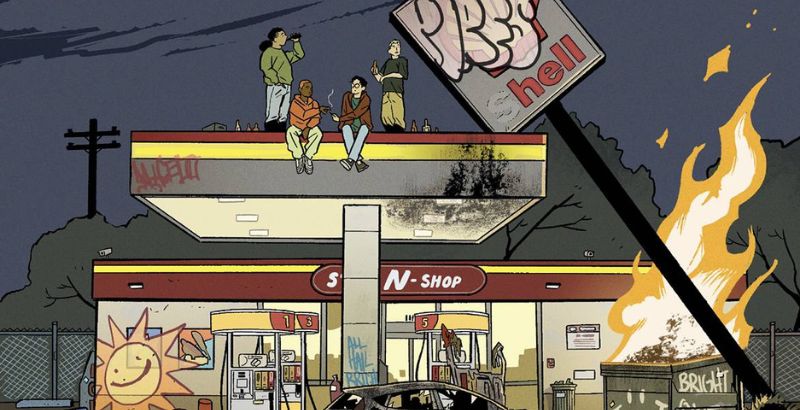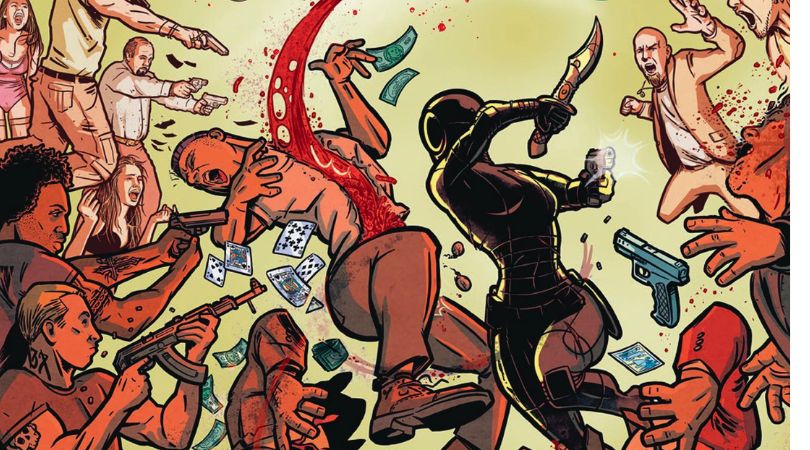
No One Left to Fight #2 is a comic that comes from Dark Horse Comics, written by Aubrey Sitterson, illustrated by Fico Ossio, and lettered by Taylor Esposito. In the first issue, readers are introduced to Vâle, a former superhero who saved the world from the ultimate evil, Gor Despo. Years have passed since the battle and those who took part have all settled down. During this time, Vâle goes to visit his old friends Fargie, Krysta, and Timōr whom he has lost touch with. However, Timōr doesn’t completely trust Vâle and doesn’t do anything to hide this. Vâle is visiting his friends in hopes that they will accompany him on a trip which he doesn’t want to go on alone.
No One Left to Fight #2 picks up with the conclusion of the fight between Vâle and Timōr. Krysta stops the fight and scolds both of them for behaving like children. The following morning, the trio make plans to visit Mistress Harga, who taught both Vâle and Timōr how to fight. As they head out, Vâle quickly becomes the center of attention once again as a hoard of fans are waiting outside to greet and thank him for saving the world. Once they arrive at Mistress Harga’s home, it’s made clear that the relationship between Harga and her pupils wasn’t great.
One of the most interesting things that Sitterson has done with this issue is the way he’s written Timōr’s character. While No One Left to Fight seems to be Vâle’s story, Timōr’s arc has interested me the most. Much like the dynamic between Goku and Vegeta in the Dragon Ball series, there is an obvious rivalry between Vâle and Timōr that transcends beyond simple jealousy. All of the praise goes to Vâle while any of the accomplishments that Timōr has done are forgotten. Even his children tease him about this as seen in the image above. One can assume that these instances are meant to have readers root for Timōr to get the recognition he deserves. If anything, this just increases my excitement for the next issues in the series.
The introduction of Mistress Harga was definitely not something I was expecting. It does, however, help uncover the many mysteries surrounding the main characters of the series. It’s clear within the first few pages of meeting her that she showed favoritism to some of her students, which created all sorts of issues that Sitterson explores. However, these issues go beyond the effects that favoritism often causes. Harga knows that this adoration she showed to certain students lead to them focusing so much on being fighters rather than living out their normal lives. It’s an outcome that Harga is willing to admit is her fault. Admitting this shows how much she cares for her students.
Winda and Vâle’s relationship could very much prove to add an interesting angle for the rest of the series. It was hinted at in No One Left to Fight #1 that Vâle and Krysta may have been together in the past. Since Krysta’s now married to Timōr, there’s a possibility that something could spark between Vâle and Winda. However, it’s difficult to imagine anything happening since all that Vâle has known throughout his entire life is how to fight. He’s formed friendships with other people but most of them appear to be fighters. From what’s been revealed in both No One Left to Fight #2 and the previous issue, one can assume that their relationship may not really blossom into anything.
Overall, I really enjoyed No One Left to Fight #2. Sitterson continues to develop his characters very well and has managed to make me root harder for Timōr than Vâle. It’s such an intricate story with phenomenal artwork from Ossio that tackles life after your purpose in life has been served. I’m hoping that the next issues go into this even more. It’s not often I see stories being written about heroes who must adapt to regular life after they have saved the world from every great danger possible.
No One Left to Fight #2 is available for purchase now wherever comic books are sold.
No One Left to Fight #2
TL;DR
It’s such an intricate story with phenomenal artwork from Ossio that tackles life after your purpose in life has been served.







